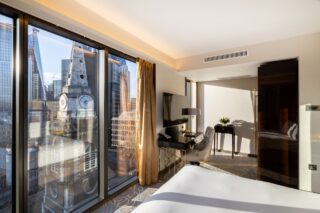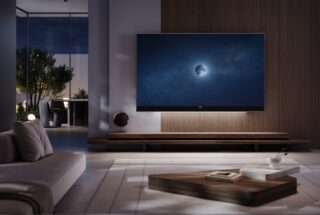This website uses cookies so that we can provide you with the best user experience possible. Cookie information is stored in your browser and performs functions such as recognising you when you return to our website and helping our team to understand which sections of the website you find most interesting and useful.
Sensescaping: Six ways to bring sensory design into your home
By Shivani Dubey | 23 April 2025 | Design
How do you create a home that stimulates all five of your senses? We list some of the best interior-designer-approved ideas to incorporate sensescaping into your home decor
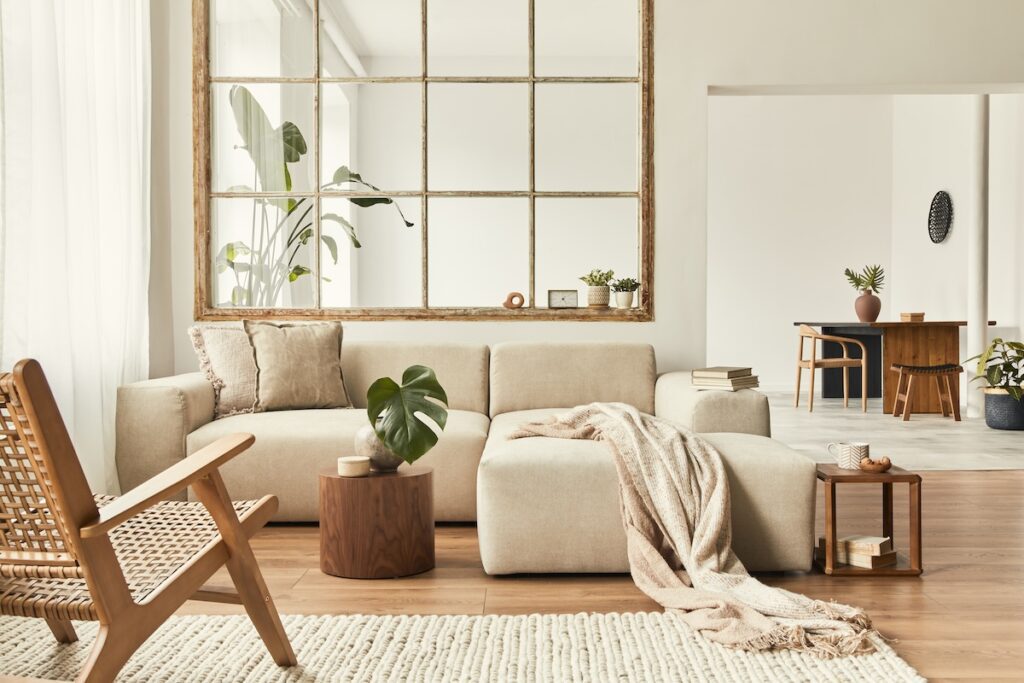 Designing homes is a Herculean task. Ensuring that everything in your home matches your vibe, aesthetic and creative direction is no easy feat. The struggle of having just finished a redesign, only to find something else that makes you want to tear everything down and start all over is one that we’re all too familiar with. So how do you create a home that stimulates all five of your senses to create a haven tailored exclusively to you? This is where sensescaping comes in.
Designing homes is a Herculean task. Ensuring that everything in your home matches your vibe, aesthetic and creative direction is no easy feat. The struggle of having just finished a redesign, only to find something else that makes you want to tear everything down and start all over is one that we’re all too familiar with. So how do you create a home that stimulates all five of your senses to create a haven tailored exclusively to you? This is where sensescaping comes in.
Sensescaping is an interior design trend that engages all five of our senses to enhance wellbeing and create particular moods throughout your home. The idea is that by catering to each of our senses — sight, smell, touch, sound and taste — we can create a sensory haven that evokes certain emotions and feelings depending on the room you’re in.
It is more than just about making a home look good — it’s a holistic approach to creating interiors that engage all five senses, fostering immersive, wellness-focused environments.
Here, we detail six different ways in which you can incorporate sensory design into your homes to create an environment that brings wellness to your doorstep.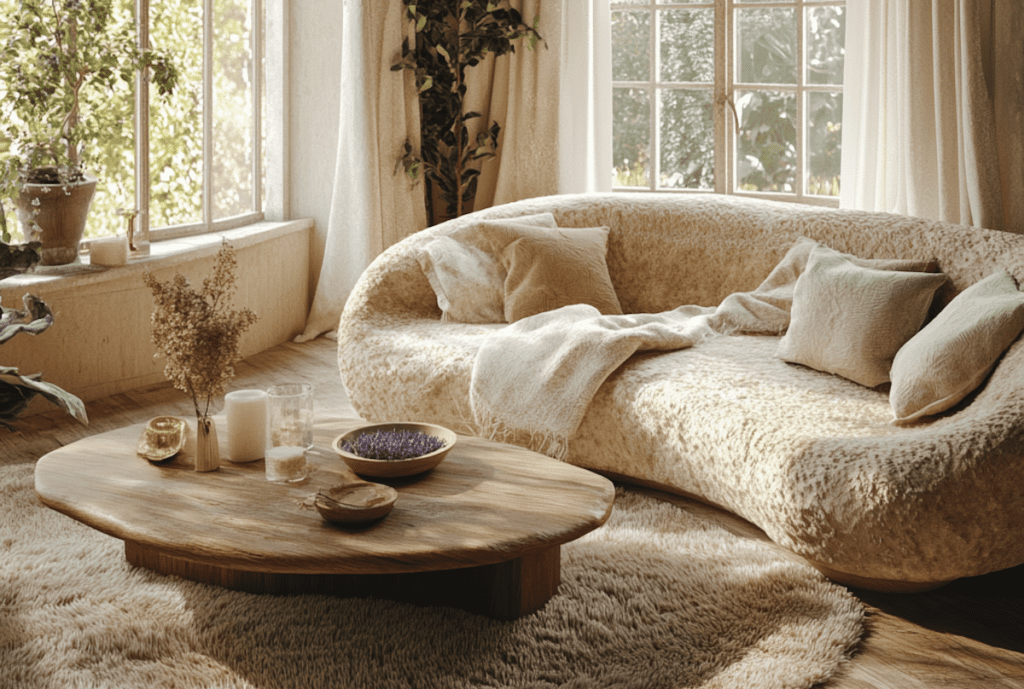 INCORPORATE TACTILE MATERIALS
INCORPORATE TACTILE MATERIALS
Textures play an essential part in sensory design, says Portia. From the softness of a throw blanket to the richness of patinated furniture, tactile contrasts add depth and interest. A beautiful room without attention to acoustics or tactile elements might feel sterile.
Using fabrics like velvet, bouclé, faux fur, and linen for furniture, cushions, and throws can add depth and comfort. Adding natural materials like wood, stone, and ceramics can also provide a variety of textures. Using handwoven textiles and artisanal materials is another way to add authenticity and a deeper connection to homes.
“Bedrooms benefit from warm, soft textures like plush fabrics or upholstered furniture, creating a comforting and inviting atmosphere,” explains Alicia Meireles, Creative Director at OWN LONDON. “On the other hand, kitchens and living spaces thrive on clean, polished materials such as stone or reflective surfaces that feel practical and energising.”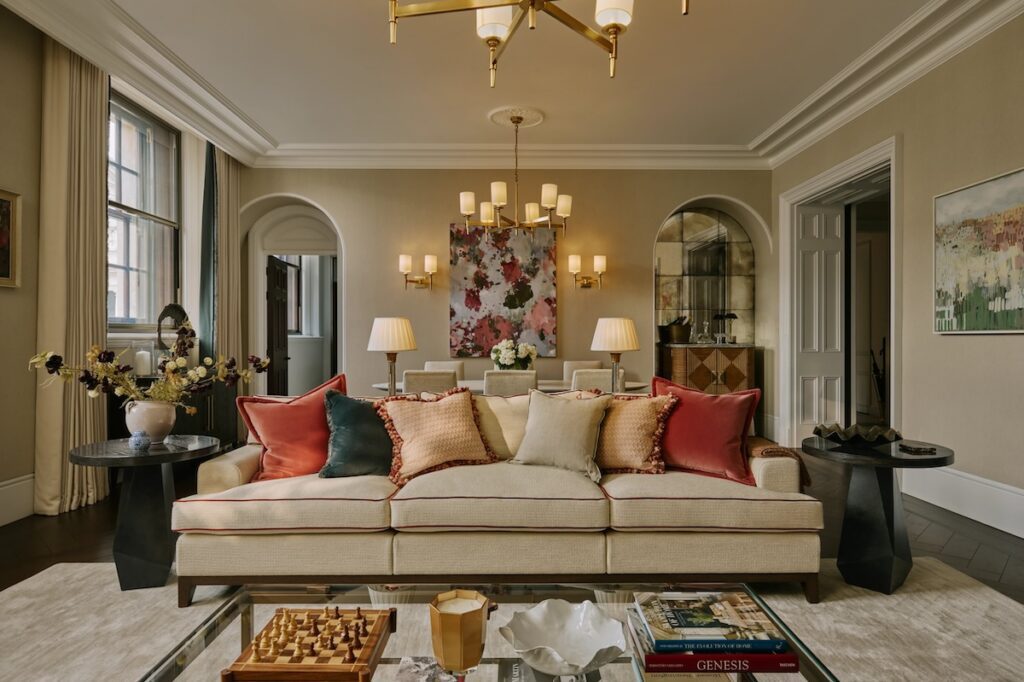 PLAY WITH LIGHTING
PLAY WITH LIGHTING
“I often start with lighting,” says luxury designer Kelly Hoppen. “Making use of natural lighting and harnessing it to highlight different textures at different times of the day is really powerful.” One way to do this is by layering textures so that your space adapts to your needs, she explains. This helps to cover all senses and utilise them to aid comfort and productivity.
Add dimmable lights and smart bulbs to adjust brightness and colour based on mood or activity. Consider warm, soft-toned lighting for a cosy atmosphere in the evenings. Use natural light by incorporating sheer curtains or blinds to soften the ambiance. Layer lighting to suit various moods and times of day, blending natural light with ambient, task, and accent lighting to create spaces that feel warm and adaptable.EMBRACE CALMING COLOURS
Designers suggest applying principles of colour psychology to choose hues that evoke desired emotions, like blues and greens for calmness or yellows for energy. Opt for earthy tones and neutral palettes to create a soothing backdrop.
Colour psychology involves understanding how colours influence human emotions and behaviours. Incorporating this philosophy into designing your home can greatly influence the feelings being in each room can evoke in you.
“We see first-hand during our personalised design process that customers want colours and layouts that are calming and will reduce stress,” says Megan Baker from My Fitted Bedroom. “They want their spaces to positively impact their senses and overall wellbeing, beyond being something functional or just pleasing to the eye.”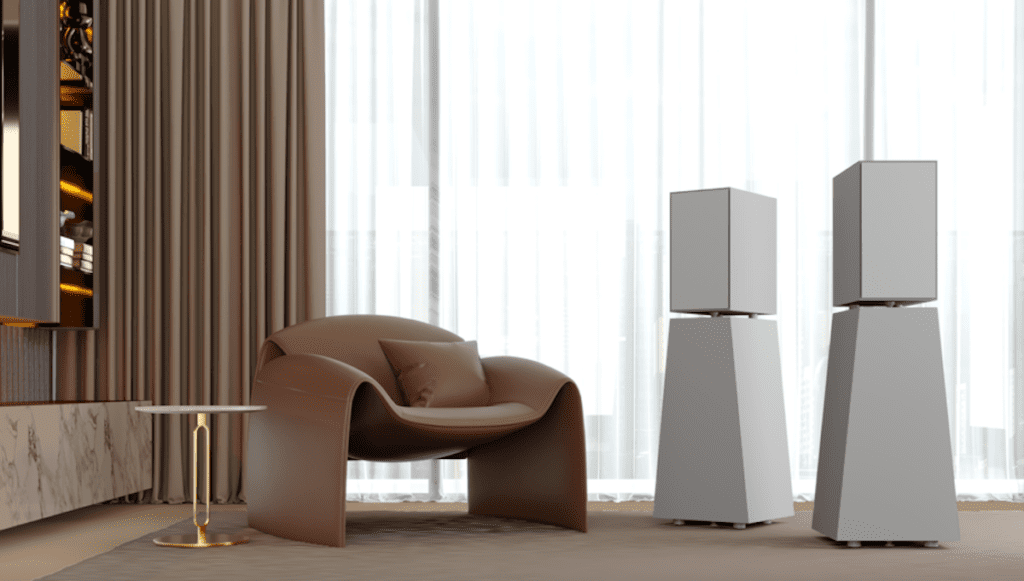 ENHANCE SOUNDSCAPES
ENHANCE SOUNDSCAPES
Whether soundproofing urban homes to create peaceful retreats or installing discreet audio systems for immersive soundscapes, carefully considering acoustics is an important element of sensory design, explains Portia Fox, founder and creative director of London-based design studio Portia Fox. Some tips include installing soft background music systems or white noise machines to reduce stress or using thick rugs, upholstered furniture and curtains to absorb sound and minimise echoes. Acoustic wall panels are also important within this trend.
When it comes to sound, we recommend Goldmund for their incredible precision-engineered speakers, amplifiers and audio systems. The Goldmund Asteria wireless speakers are very minimalistically designed, amplifying not just the sound but the aesthetic of an entire room.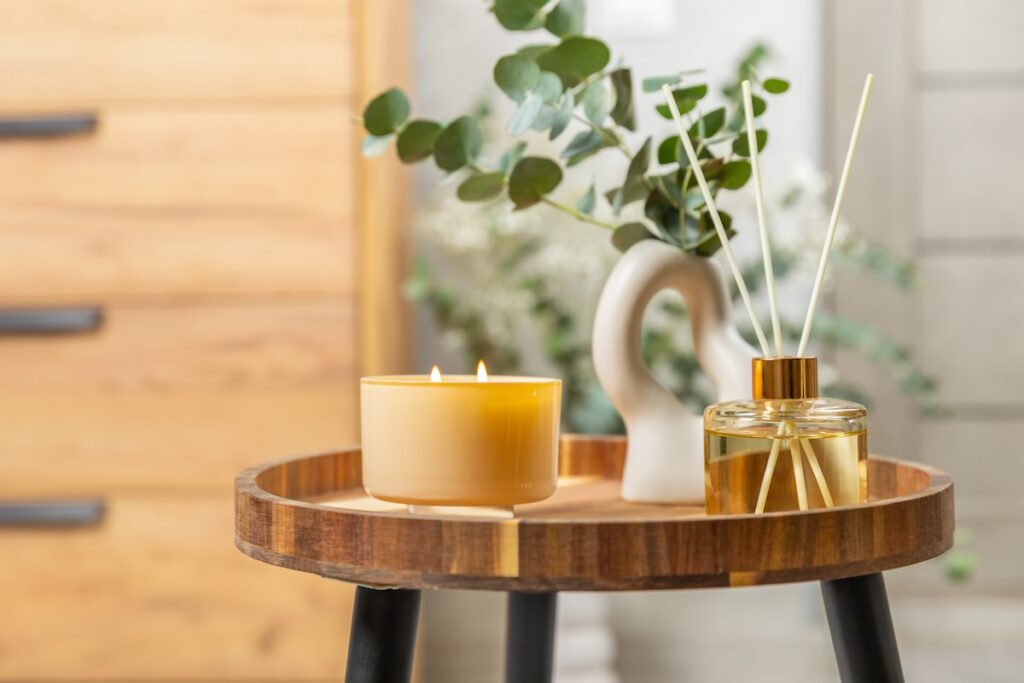 FOCUS ON SCENTS
FOCUS ON SCENTS
Scent is one of the most powerful sensory triggers, capable of setting the mood, enhancing comfort, and even improving well-being, says Erin Hollingshead, Aromaria’s regional director for the UK and EU. It provides an invisible layer to home decor that instantly creates an emotional and memorable connection with the space. A well-chosen fragrance can evoke warmth, sophistication, or tranquility, making a home feel truly lived-in and harmonious.
For home fragrance, using a combination of diffusers, scented candles, room sprays and perfume sticks can completely transform a living space. One way to effortlessly transition scents is by layering—keeping a consistent base note while rotating complementary top notes to reflect the season. This ensures continuity while allowing for subtle, meaningful changes throughout the year. Brands like Aromaria, Unwritten and Maison Louis Marie are great examples of bespoke fragrance brands that can enhance any space you walk into.
Another brand we would highly recommend is One&Only. Though it is a hospitality brand with numerous luxury resorts, villas and homes under its belt, One&Only provides bespoke scents and fragrances that are inspired by these resorts. With such an acute awareness of how a scent can transform a room, One&Only is a brand that will more than deliver on the promise of a holistic experience.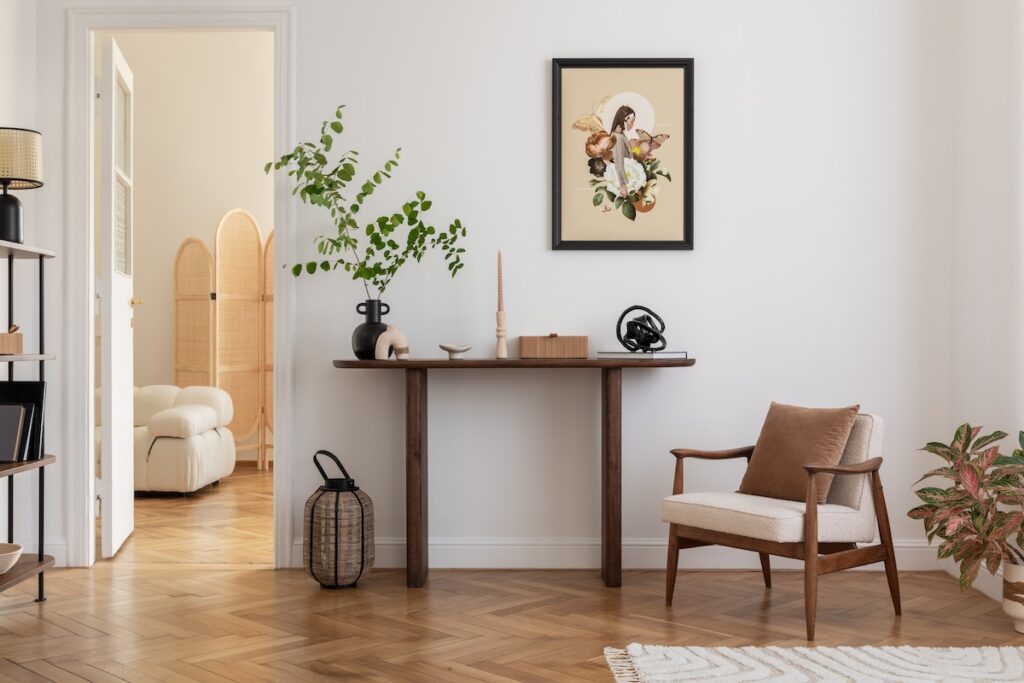 DESIGN FOR MOVEMENT AND FLOW
DESIGN FOR MOVEMENT AND FLOW
Spatial planning is extremely important in designing a home, says Alicia. Arranging furniture to create open, easy-to-navigate spaces that feel welcoming and functional can be a great way to incorporate sensescaping into your homes. Use rounded furniture edges and flowing layouts to enhance a sense of comfort and safety. Include soft rugs and mats that feel inviting underfoot.
“For example, when designing layouts, I make sure to position kitchens away from bedrooms to prevent cooking smells from traveling and disrupting rest, “ she says. “In my own home, I layer sensory details—subtle scented candles, dimmable lighting, and carefully chosen artwork—to create spaces that feel personal and balanced.”




